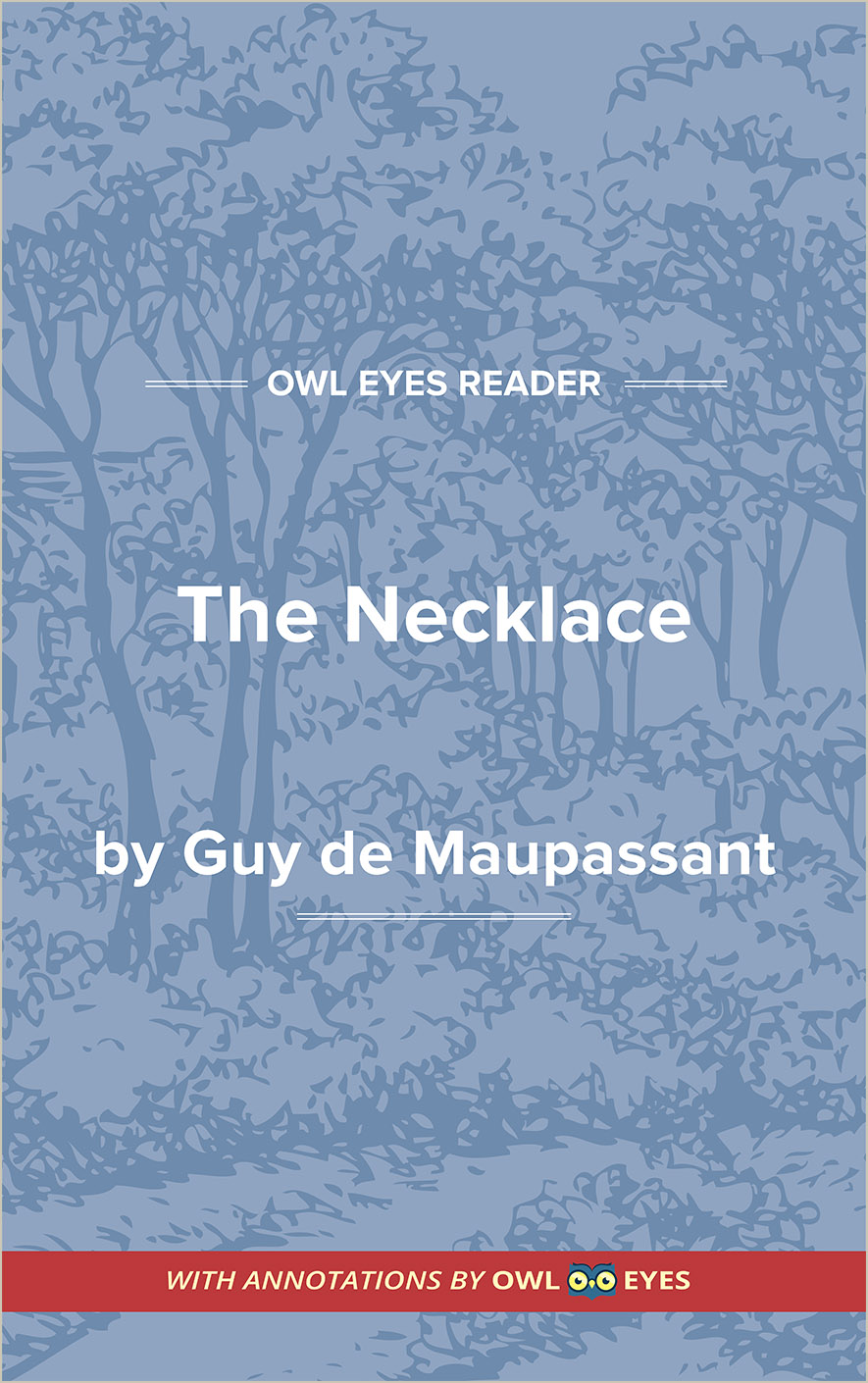Study Guide
Analysis Pages
Summary
Mathilde Loisel is miserable as the wife of a middle-class Parisian clerk. She suffers constantly from what she views as a life of poverty. Although her husband’s income from his position as a clerk at the Ministry of Public Instructions sufficiently meets the couple’s needs, Mathilde dreams of attending the local salons, which host intimate gatherings of the upper class. She assumes airs at the dinner table, fantasizing that she is eating a higher quality of food and imagining herself dining with the wealthy. Mathilde focuses on her lack of jewels and fine clothing rather than on enjoying her life. She is jealous of one acquaintance in particular with whom she attended convent school, Madame Forestier, who has made a good marriage to a wealthy man.
Thinking Mathilde will be pleased, Monsieur Loisel brings her an invitation to a ball at the Palace of the Ministry. Mathilde surprises him by throwing down the invitation. Because Mathilde lacks a beautiful gown and jewels, she does not feel she can attend the ball. Monsieur Loisel reluctantly agrees to finance the purchase of a four-hundred-franc gown, understanding that he must sacrifice a planned hunting vacation with friends to do so. Mathilde buys the dress but complains that she has no jewels. Monsieur Loisel suggests that she visit her friend Madame Forestier and ask to borrow some jewelry. For once, Mathilde is pleased by a suggestion made by her husband.
Madame Forestier offers Mathilde the choice of her jewels. Mathilde selects a superb diamond necklace from a black satin box. She feels euphoric when she tries it on. When Madame Forestier immediately agrees to let her borrow the necklace, Mathilde kisses her in gratitude.
At the ball, Mathilde’s beauty attracts much attention. She is ecstatic when many men ask her name. She dances with all of the attachés from the cabinet and is even noticed by the minister. Intoxicated with pleasure and passion, Mathilde exists for a time in a fantasy haze. She believes she has at last succeeded in her quest to excel in high society.
Monsieur Loisel finds a room in which to sleep while Mathilde enjoys dancing and socializing. At 4:00 a.m., she is ready to leave. As Monsieur Loisel places her everyday wrap over his wife’s shoulders, it contrasts so much with her beautiful gown that she hurries to depart before the other women notice. Although Monsieur Loisel asks her to wait inside and avoid the cold as he calls a cab, she races down the stairs. They fail to hail a cab and walk miserably in the cold until they find an enclosed carriage, the transportation mode of the middle class, in which to ride.
The Loisels arrive home at the Rue des Martyrs, and Mathilde pauses to enjoy her reflection in the mirror. She screams when she sees that the necklace is missing. She and Monsieur Loisel search frantically, but they cannot find the necklace. Monsieur Loisel volunteers to walk back to the ball’s location, searching as he goes. He returns home exhausted and without the necklace. At his instruction, Mathilde writes a letter to Madame Forestier, explaining she will delay in returning the necklace. She lies, claiming that its clasp broke so she is having it repaired. This ruse allows them time to continue the search.
When the Loisels are unable to find the necklace, they use its jewel box to search for a jeweler from whom it might have been purchased. They discover the value of the necklace to be forty thousand francs; a jeweler offers to sell them a duplicate for thirty-six thousand francs. They buy the necklace using Monsieur Loisel’s inheritance of eighteen thousand francs and borrowing the balance, imperiling their future security. Still hopeful of finding the necklace, they secure a promise from the jeweler to...
(The entire page is 955 words.)
Owl Eyes subscribers get unlimited access to our expert annotations, analyses, and study guides on your favorite texts. Master the classics for less than $5/month!

